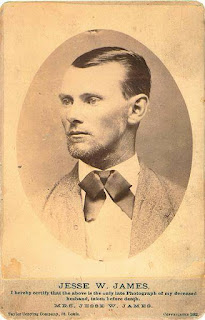Wyatt Earp Aficionado and Devotee's
One U.S. Main St.
Anytown USA
Dear Wyatt Earp Aficionado,
There are in this world, men of substance, action and being, who by Gods grace are placed in their time and location to influence the world around them. Its easy to wax philosophical over such men, and to ponder over men like Wyatt Earp. Especially by the men who sometimes ponder history. They pour over texts, letters, diaries, records and old tintype photographs trying to nail down the persons or times in which the lived, contemplations grow within their minds. But behind the mask, is a desire. The desire takes on many forms of intentions, they range from the most sincere actions of the heart, to the most evil intentions of destruction. But the hind site of time, history, age and health, can temper the hardest of souls. I know this is true of Wyatt Earp, who was a man of substance, action and being. A man who wore a badge of authority, but the badge never made him who he was. He made the badge what it was supposed to be. The evidence of this can be found not in the semi fictional, but in the many documents that he left behind, which eventually came into possession of Writer and Earp historian Glenn Boyer. Direct evidence in the way of records and letters were donated to the Arizona Historic Society (AHS) from Glenn Boyers collection. The AHS has in their possession hundreds of pages of documents between Wyatt Earp, Josephine Earp, Stuart lake and Houghton Mifflin publishers. Stuart Lake and Wyatt Earp had formed a very tight, cooperative and cordial relationship as Lake had begun his journey to write Wyatt Earps biography, "Frontier Marshall". I have begun the process of purchasing copies of these letters with the intent of showing the public what is in these files, as I believe that the truth should be revealed for all of those who want to know what really happened, rather than examining it through the lens of Hollywood. My original intent was to photograph and publish each letter, however AHS has exercised copyrights over all copies and requires a $25.00 fee for each page that is placed on public display, not to mention that AHS also charges $1.50 per page printed. It is therefore cost prohibitive to display each page. I can however transcribe each page. On one hand this will be very time consuming, but on the other hand, I will indeed gain much knowledge from closely examining and transcribing each page. I will do my best to recreate the look and feel of every letter, so that the reader has a full feel for its contents, which was written by first generation typewriters and context. I look forward to this endeavor, and I hope the reader will benefit from this article.
Very Sincerely
Gene Stevens
Letter dated; July 22, 1928,from Wyatt Earp to Stuart Lake;
4002 West Seventeenth St. Los Angeles, California July 14 1928 22
Mr. Stuart N. Lake 3916 Portols Place, San Diego, California.
Dear Mr. Lake;
My work on the desert, for the season, is completed, and there is nothing now that might inter-fere with anything that I might have in mind. There-for I am wondering if it will be convenient for you to come to Los Angeles next week, preferably the latter part.
When you were here several weeks ago. I thought to come to San Diego, as I explained to you. However, such an arrangement does not seem feasible now; my health is not as rugged as I would like it, and several matter of business pending would require my presence here. I hope your coming to Los Angeles would not prove a real inconvenience to you; I regret indeed to have to make this suggestion.
I must not forget to explain that we are mov-ing next week, to 4004 West Seventeenth Street-in the same court, the bungalow that faces down the middle; so please look for us there; I shall expect you. Mrs. Earp joins me in kind regards.
Very Sincerely
Wyatt S. Earp
-------------------------------------------------------------------------------------------------
July 25, 1928
Mr. Wyatt S. Earp 4004 West Seventeenth St. Los Angeles.
Dear Mr. Earp:
I was sorry indeed, to learn that your health is not exactly as you would like it; also, that you are not coming to San Diego as you planned. We think this is the most delightful summer place in the country.
As matters are now, I am sure that I can come to Los Angeles to see you on Thursday, August 2. I hope to get to your house by 10:30 in the morning, but if I do not appear at about that hour, will be there about 1:30. We can then talk over the details for going through the work ahead.
It would simplify things, I think, if you might have your material more or less ready to hand when I come. I can then see what is immediately ahead in the way of necessary preparation for the actual writing I'll have to do, and so can plan more intelligently.
Will you convey my respects to Mrs. Earp. and expect me, as I said on Thursday, August 2?
Sincerely your,
Stuart N. Lake






.jpeg)





























